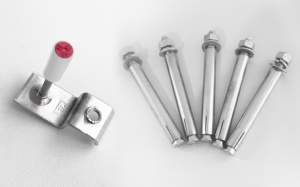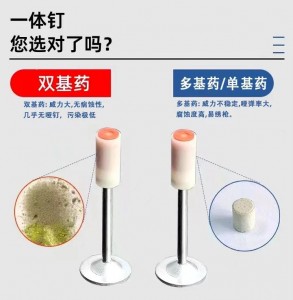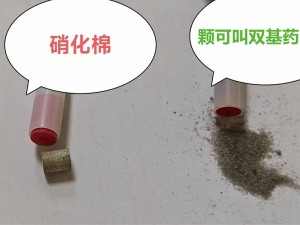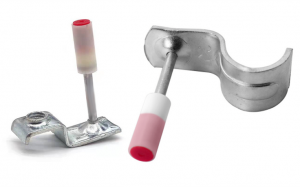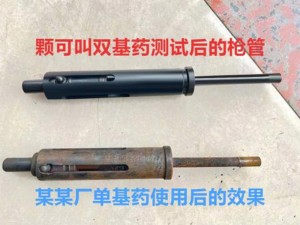In recent years, as a new type of fastening product, integrated nails have rapidly gained market recognition and customer favor due to their labor-saving, convenient, efficient and safe features, and have shown a rapid development trend. Compared with the traditional expansion bolt fastening method, it has two outstanding advantages.
First of all, the integrated nail has its own power supply and does not need to be connected to electricity or gas. It is light and portable and can complete the fastening work with just nail gun and the integrated fastener.
Secondly, there is no need for high-altitude drilling, construction is convenient and fast, labor intensity is low, construction efficiency is significantly improved (more than 20 times), and construction costs are greatly reduced.
At present, integrated nails on the market can be divided into three categories according to their components: binary explosive integrated nails, nitrocellulose integrated nails, and “multi-base explosive”integrated nails. So, what are the differences between these three types of integrated nails, and how should we choose?
Composition
1.1 double-base explosives are composed of nitrocellulose (NC, also known as nitrocellulose) and nitroglycerin (NG), mostly in granular form. Granular double-base explosives should be made of nitrocellulose that meets the requirements of GJB 3204A-2020 and nitroglycerine that meets the requirements of GJB 2012-1994 as the main raw materials, and must not contain detonators, metal powders, combustion catalysts, solid explosives and prohibited oxidants. It is decided by the state. It has the characteristics of high energy, low hygroscopicity, good physical stability, and stable ballistic performance.
1.2 Nitrocellulose (also known as single-base explosive) is composed only of nitrocellulose and is mostly cylindrical. Cylindrical single-base explosives should be made of nitrocellulose that meets the requirements of GJB 3204A-2020 as the main raw material, with a nitrogen content of not less than 12.60%. They must not contain detonators, metal powders, combustion catalysts, solid explosives or oxidants and energy components prohibited by the state. Relatively simple.
1.3 The “multi-base explosives” actually add energy enhancers, strong oxidants, and nickel hydrazine nitrate (an oxidant prohibited by the state) and other substances to single-base powders to improve their product performance and achieve the effect of double-base explosives. . The fundamental reason is that the nitrogen content of the nitrocellulose used is much lower than 12.60%. Especially when mixed with detonators and single-base gunpowder, the safety and stability of the “multi-base explosives” are extremely poor. The many safety accidents that have occurred across the country in the past three years are painful lessons. Adding prohibited oxidants may constitute a violation or crime. Therefore, compared with the three types of explosives, double-base explosives are superior and have greater safety and stability.
Appearance
2.1 The appearance of the two-element explosive integrated nail is slightly darker.
2.2 The integrated nails of nitrocellulose and “multi-based explosives”have a clean appearance and no impurities, with distinct red and white colors.
2.3 The explosive of the binary explosive integrated nail is in the form of granules.
2.4 Nitrocellulose and so-called “multi-based explosive” integrated nails are mostly cylindrical.
Performance
Compared with the other two types, the manufacturing cost of binary explosive integrated nails is slightly higher, but its safety and performance are more outstanding, mainly reflected in the following four aspects.
3.1 It has high power, good consistency, stable performance and wide application scenarios. It can meet various usage environments, especially high-power scenarios, making it the best choice.
3.2 High safety, the detonator is located at the bottom of the shell and requires a specific method to detonate. However, the existing so-called “multi-based explosives” add detonator components to the explosives, which require higher production, transportation, storage and use. Any extrusion or impact during these processes may cause serious safety accidents and constitute major safety hazards.
3.3 The product has good stability. double-base explosives have extremely high moisture resistance, do not absorb moisture in the air, and almost never catch fire. The so-called “multi-based explosives” are highly hygroscopic and cannot detonate, causing misfires. Due to the exothermic reaction that occurs when moisture is absorbed, there is a danger of spontaneous combustion under certain temperature conditions.
3.4 double-base explosives are particularly friendly to nail guns, do not corrode, and are not picky about tools, while so-called “multi-base explosives” severely corrode nail guns and make the tools unusable, thus affecting construction efficiency and increasing costs. The most lethal hazards are corrosion of nails and metal hangers. The key to all fastening construction purposes is the durability and time of the nails and metal hangers. Due to corrosion, it is easy to collapse or fall, causing loss of property or even life, which is tantamount to a crime!
Conclusion
Throughout the history of the development of firearms and ammunition around the world, the primer + explosive shooting method is still the most advanced traditional method of mankind. Other methods, such as combining detonators with explosives, lack scientificity and practicality. Due to its inherent characteristics, double-base explosives have been proven for hundreds of years and are still irreplaceable in terms of safety, stability and reliability.
Therefore, choosing double-base explosive integrated nails is definitely your most ideal and wisest choice!
Post time: Aug-27-2024


